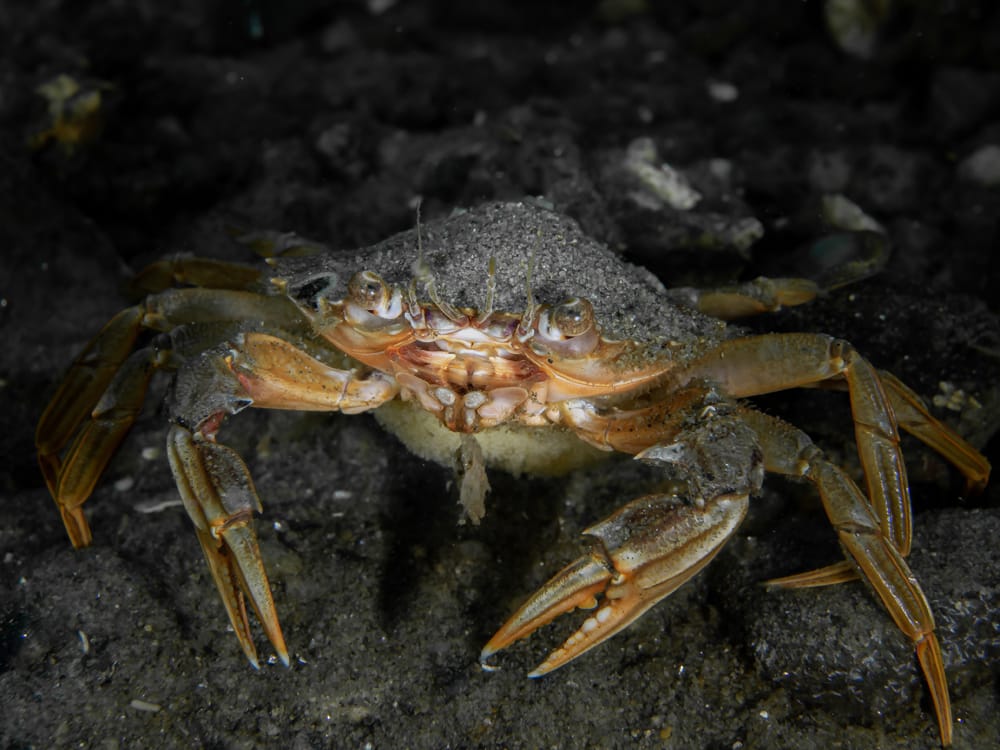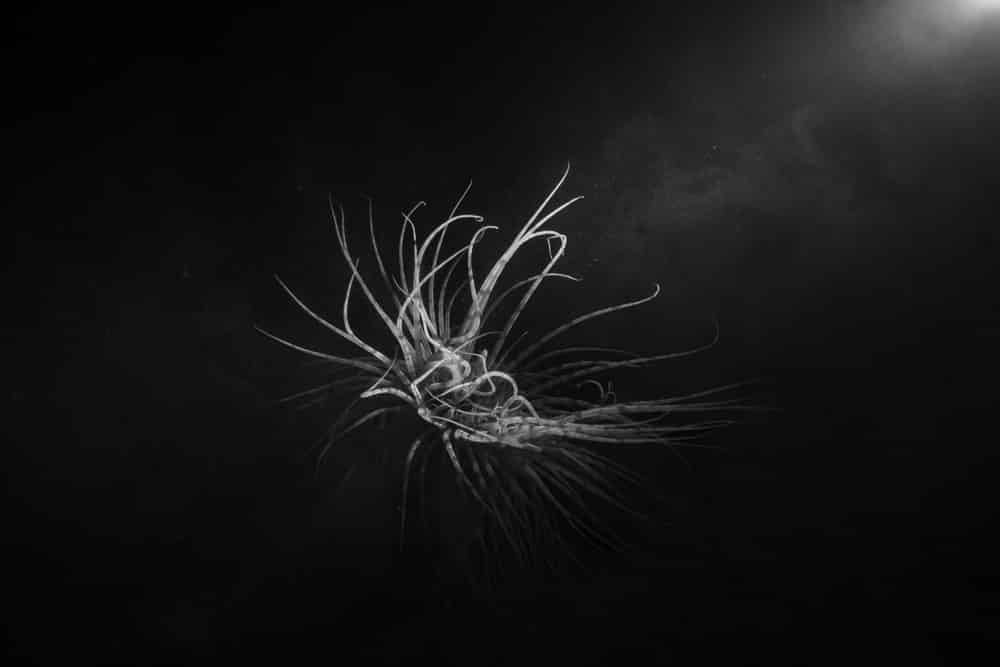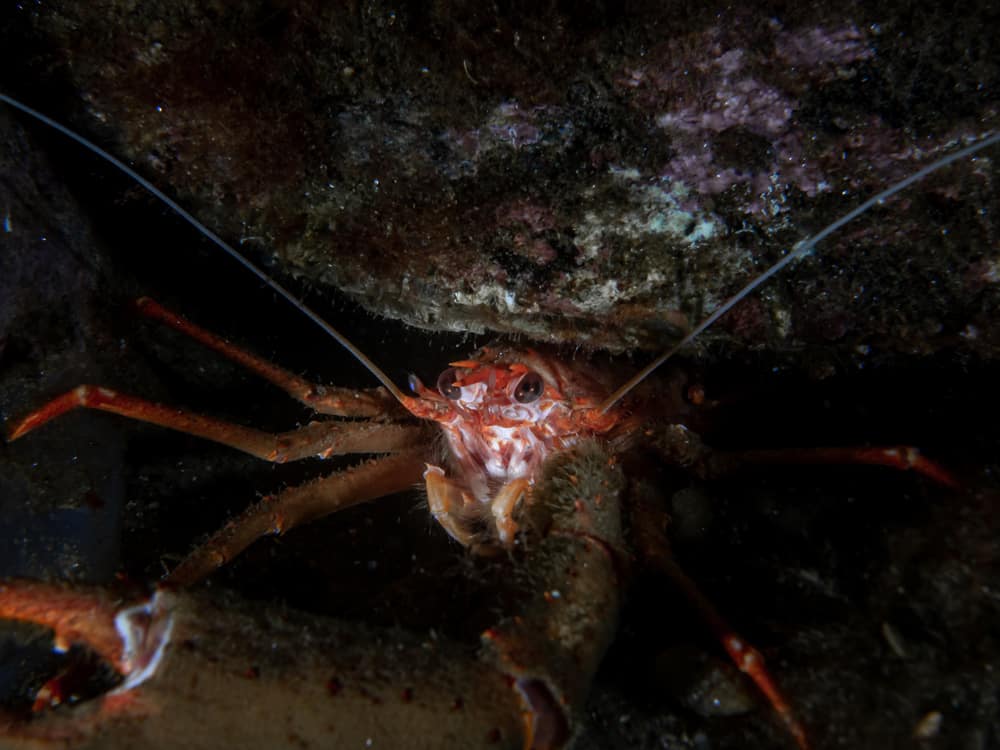News
Scotland Underwater: St Cats, Loch Fyne

The next in a series of blogs about Scotland Underwater from Ross Mclaren…
Loch Fyne on Scotland’s west coast is a sea loch probably most well-known for the incredible sea food that comes from it and is sold across the UK and Europe. At 70km long and with a maximum depth of around 200m, it’s also Scotland’s longest sea loch, which means… plenty of opportunity for diving.
Although maybe just pipped to the title of “Most Dived Loch in Scotland” by Loch Long just to the east, Loch Fyne is an ever-popular destination for divers throughout the country and even the UK. She may be slightly further away from the central belt and Glasgow than Loch Long, but it’s more than worth it.
Coming from Glasgow, you actually drive around the head of Loch Long, down her west bank under the shadow impressive Arrochar Alps before continuing to follow the A83 into the unbelievable Glen Croe. The views alone from the Rest and Be Thankful at the top of the Glen looking back on the road you’ve taken is worth the extra drive.
With twenty-two dives sites in the Loch (according to Finstrokes), I won’t even pretend I’ve dived them all, there is more than enough to whet the appetite of any and all divers.
Aside from Finnart (or A-Frames) on Loch Long, I don’t think there is another dive site in Scotland as popular as St Cats, on Finstrokes it’s listed as Seal Reef and some also call it St Catherines. The name might be up for discussion, but its popularity is most definitely not and once you’ve taken a wee dook underwater it’s easy to see why. With plenty of parking, and a pretty easy entry and exit point, it can be really busy during the summer months… but sadly, not just with divers! The good old Scottish midge also appears to very much appreciate the site as well and enjoys a wee buffet courtesy a la diver… you have been warned! However, the site is well worth braving our wee pests.
Now there’s two ways to dive St Cats. The “main” dive is straight forward to be honest. Once you’ve dropped beneath the surface head directly out from the shore you come to a “drop off”. It’s not a cliff per-say, but it’s a pretty obvious slope. At this point head down to around 8 to 10m and simply turn right keeping the incline on your right-hand side. This isn’t the main part of the dive, but don’t rush too fast, keep an eye out here for the odd dogfish hanging around the slope. Keep finning at about 10m and eventually you pick up the rocky reef. From this point it is totally up to yourself as to your depth. If you’re looking for a shallower dive simply keep swimming across the reef and take as long as you like looking under all the rocks, there’s plenty of life to find.
Now, I make no promises here, but the last few dive days we’ve had here has rewarded us with an absolutely magnificent lobster at the far side of the reef. Best way to find it would be to head down edge of the rocks once you first hit them to about 16 to 18m. At this point, swim straight across the reef until you come to the end of the boulders. There should be a rather large rock, with another propped up against it, and on the far side of it, at the bottom the home of Mr Lobster. But, be careful, the claws are big. If you’ve not found it by swimming straight across simply swim up and down the far side edge of the boulders and it shouldn’t be too hard to spot.
Personally, I always tend to follow the edge of the rocks down to steel wire which stretches right across the reef at about 16 to 20m, I’ve no idea what it’s from, but it makes for a really good navigation point during the dive. Most people tend to use this as the start of their zig zag exploration of the reef, but if you are looking for depth swim over the top of the wire and continue to follow the rocks down to your chosen depth. I’ve only ever been to around 40m, and although there isn’t much in the way of life, there has been fireworks anemone found at depth and even the odd cuttlefish/bobtail squid. I’m not going to lie; this is the one and only time I’ve seen one during a dive and being around 37m at the time I did wonder if I was narked. I still like a wee look down deeper just on the off chance I come across it again… cause you know, obviously it hasn’t moved in the past year or so… one can dream.
Regardless of the depth you chose the dive itself is the same. Simply zig zag your way back up the reef taking your time. The rocks are absolutely teeming in life and there’s very often the odd lobster hiding away. Once you’re done exploring simply head back to the edge of the reef, now keeping the slope on your left at about 10m again and the fin back for about the same time it took you to reach the boulders and your back to the entry point. It’s as easy as that!
Now, if you are looking for something a wee bit different there is actually a “wreck” of a speed boat in the opposite direction to the reef. Many people will give compass bearings etc. to reach it, but I’ve found the easiest way to find it is to simply swim straight out and down from the entry point and head to around 18 to 22m. From here turn left keeping the slope on your left-hand side. Have your buddy swim at around 17m and you at about 21m (if visibility allows for it) and simply start finning until you come across it. Depending on your fin strokes, you should hit the wreck after about 4 to 7mins. The detour from the “main” dive to visit the speedboat is well worth it. The “wreck” is pretty much intact, though the seats seem to have miraculously detached themselves, and is now home to scores of squat lobsters, anemones and at one time a rather large “Ling”. Sadly, at some point over the last year or so, we think, someone has used the boat as practice for lift bags and actually turned the whole thing 1800 and in the process it would appear they’ve scared off the ling, which I’ll be honest is rather infuriating! My suggestion for taking in the speedboat is to do this first, once you’re finished exploring the “wreck”, head up the slope to a shallower depth and then head back along it keeping it on your right hand side. This will take you back to the entrance, however if gas/dive plan allows you can continue along to the “main” reef and do a slightly shallower zig zag checking out the boulders once again.
St Cats/Seal Reef/St Catherine’s is probably overlooked by many of us divers who regularly dive the sea lochs. We can be guilty of passing it off as just a “good training site”. But, it does offer a lot for most divers and in fact, with it’s nice little beach and secluded parking off of the main road, also makes it good for non-diving friends and family as well. It’s often used by local clubs and groups as a small campsite for those who fancy spending the weekend.
For more from Ross, follow him on Instagram @underwater.ross and on Twitter @outdoorsross.
Gear News
Introducing the TR-80, IR-50 and CS-30 Regulators from DYNAMICNORD

Whether you are a beginner or a professional diver – with the three new main regulators from DYNAMICNORD, everyone will find their favourite regulator. They all look super stylish.
Excellent performance with the TR-80
Quality and performance are the be-all and end-all for regulators. It is not for nothing that the TR stands for Tec Reg. The innovative design of the TR-80 guarantees absolute reliability – even in ice-cold waters.

Perfect breathing effort at 0.8 J/l / certified for diving in waters below 10 degrees / structural design made of solid brass for best cold protection / membrane-compensated design with dry seal of the first stage / reduced exhalation effort thanks to optimized exhalation membrane and bubble deflector / adjustable Venturi (dive/predive) and adjustment knob for individual inhalation comfort / innovative design of the front cover prevents free-flow in strong currents or when diving with scooters / design made of sandblasted brass, matt chrome finish / 2 HP and 4 LP outlets / mouthpiece made of high-quality, anti-allergic silicone for maximum comfort.


Amazing underwater adventures with the IR-50
The IR-50 is the top regulator for advanced and experienced divers. Natural breathing is the essence of this regulator.

Ideal breathing effort at 0.8 J/l /certified for diving in waters below 10 degrees / compensated membrane / adjustable venturi (dive/predive) and adjustment knob for individual inhalation comfort/ outlet valve and deflector for minimum exhalation effort and reduction of bubbles on the face / design made of sandblasted brass, matt chrome finish / 2 HP and 4 NP outlets / mouthpiece made of high-quality, anti-allergic silicone for maximum comfort.


The Workhorse – our CS-30
For diving centres and diving beginners – the workhorse stands for strong construction, reliability and robustness. Perfect for your training.

Optimal breathing effort at 0.8 J/l /recommended for diving in waters above 10 degrees / non-compensated piston / adjustable venturi (dive/predive) / outlet valve and deflector for minimum exhalation effort and reduction of bubbles on the face / design made of sandblasted brass, matt chrome finish / 1 HP and 3 NP outlets / mouthpiece made of high-quality, anti-allergic silicone for maximum comfort.


Octopus OP-30
The OP-30 is the ideal addition to all DYNAMICNORD regulators. It is identical in construction to the CS-30.

The TR-80, IR-50, CS-30 (DIN & INT) regulators and the Octopus OP-30 are available from DYNAMICNORD dealers and in the online store.
DYNAMICNORD – Your Outdoor Companion.
Marine Life & Conservation
Paul Watson Released as Denmark Blocks Japan’s Extradition Bid

Renowned anti-whaling activist Paul Watson has been released from custody in Greenland after spending five months in detention. Denmark’s Justice Ministry rejected Japan’s request for his extradition, citing insufficient guarantees that his time already served in custody would be credited against any potential sentence.
The 74-year-old Canadian-American was arrested on July 21 in Nuuk, Greenland’s capital, when his ship docked to refuel. His arrest was based on a 2012 Japanese warrant related to a 2010 encounter in Antarctic waters. Japan alleged Watson obstructed operations and caused damage to a whaling research ship during efforts to disrupt illegal whaling. Watson has consistently denied these claims, maintaining his commitment to marine conservation.
Denmark, which oversees extradition matters for Greenland, concluded that while the legal conditions for extradition were met, the lack of assurances from Japan regarding time-served credit made extradition untenable.
In a video shared by his foundation, Watson expressed gratitude and relief, saying, “After five months, it’s good to be out… and good to know they’re not sending me to Japan.” He added that the most difficult part of his time in custody was being separated from his two young sons.
Watson is a pioneering figure in marine conservation, known for founding the Captain Paul Watson Foundation in 2022 after decades of activism with the Sea Shepherd Conservation Society. His bold efforts to defend marine life have earned him widespread support, including from celebrities and conservationists. His work has also been featured in the acclaimed reality TV series Whale Wars.
Watson’s lawyer, Jonas Christoffersen, praised the decision, stating, “We are happy and relieved that Paul Watson is now free.” He added that Watson is eager to reunite with his family and continue his vital work.
The arrest occurred while Watson’s vessel, the M/Y John Paul DeJoria, was en route to the North Pacific with a team of 26 volunteers to intercept a Japanese whaling ship. His foundation described the arrest as politically motivated and emphasized that Watson’s actions were focused on ending illegal whaling practices.
Japan resumed commercial whaling in 2019 after leaving the International Whaling Commission, asserting that whale meat is a cultural tradition. Conservationists, however, continue to challenge these practices, highlighting their impact on marine ecosystems.
Despite the challenges, Watson remains steadfast in his mission to protect marine life and bring attention to whaling practices. His dedication to ocean conservation has made him a globally respected advocate for the environment.
-

 News2 months ago
News2 months agoIconic SS United States to become the World’s Largest Artificial Reef
-

 News3 months ago
News3 months agoBook Review – 52 Assignments: Underwater Photography
-

 Gear News3 months ago
Gear News3 months agoDYNAMICNORD – New German diving brand enters the British market
-

 News3 months ago
News3 months agoExploring Cenote El Pit: A Diver’s Dream
-

 Gear News3 months ago
Gear News3 months agoTry BARE drysuits (and maybe even win one!) this Friday with Sea & Sea at North West Dive Fest
-

 Marine Life & Conservation3 months ago
Marine Life & Conservation3 months agoBook Review: Coral Triangle Cameos
-

 Blogs2 months ago
Blogs2 months agoDive the Egyptian Red Sea this Autumn with Regaldive
-

 News3 months ago
News3 months ago2024 Ocean Art Underwater Photo Competition Announced





















